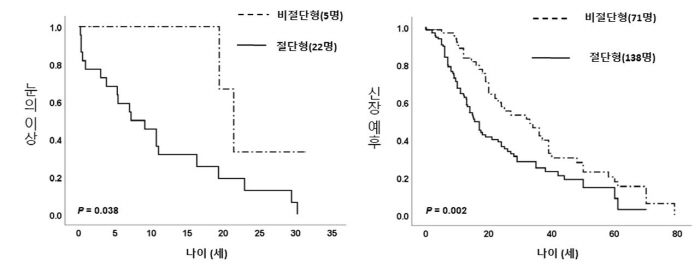Both eyes and kidneys attack at the same time, and the prognosis varies depending on the type of rare disease PAX2 gene mutation
Apr 08, 2025
|
In general, the kidneys and eyes are considered completely separate organs, but during fetal years, both organs develop together affected by a specific gene called PAX2. However, very few people suffer from rare diseases in which the kidney and eyeball are not properly formed and developed due to mutations in the PAX2 gene, and in this case, eye abnormalities such as chronic renal failure, eye-opening, strabismus, and vision loss can occur from childhood to adolescence.
These PAX2 gene-mutated diseases also show different progression rates and patterns depending on the patient. For example, some patients progress to end-stage renal failure from early teens and are accompanied by visual impairment, while others have significant deviations, such as relatively well maintained kidney and eye function into adulthood.
The problem is that it was not clear by what factors caused this difference, and accordingly, it was difficult to select a relatively high-risk group whose symptoms progress quickly.
Accordingly, the research team analyzed 27 patients confirmed with the PAX2 gene mutation at four domestic institutions from 2006 to 2022 and comprehensively analyzed a total of 328 data, including 49 existing studies.
As a result, the research team found that the world's first PAX2 gene mutation, in which the protein structure is completely cut off, is faster to progress to end-stage renal failure and is more likely to be accompanied by eye abnormalities than the PAX2 gene mutation, which maintains some protein functions.
According to the results of the study, patients with truncated mutations completely lost renal function at the average age of 11 and required dialysis or kidney transplantation, but those with non-cut mutations maintained renal function until the average age of 24. In addition, it was confirmed that eye abnormalities were common in patients with amputated mutations and tended to appear severely at a young age, and Papillorenal Syndrome, which causes abnormalities in the eyes and kidneys together, was more frequently accompanied.
In addition, the research team found that the symptoms experienced by patients with the PAX2 gene mutation are common in the order of proteinuria (37%) and ophthalmic symptoms (26%), and systematically revealed the frequency of clinical symptoms that were not clearly organized.
This study is meaningful in that it provided an important basis for accurately predicting the prognosis of patients and setting the direction of treatment according to the type of mutation in children suffering from kidney and ophthalmic diseases due to PAX2 gene mutations.
Professor Kim Ji-hyun of the Department of Pediatrics and Adolescents "If we select a high-risk group whose protein structure of the gene is cut according to the results of the study, early diagnosis and treatment can improve kidney and ophthalmic prognosis."This will contribute to the improvement of children's quality of life if it slows down the progression of the disease to severe disease "
Professor Kim Ji-hyun then said "It is important to visit a hospital for a detailed examination if a urine test confirms proteinuria at a young age or if abnormal findings such as eye shaking are found."
Meanwhile, the results of the study were published in the international renowned academic journal 'European Journal of Human Genetics'.
|
This article was translated by Naver AI translator.















